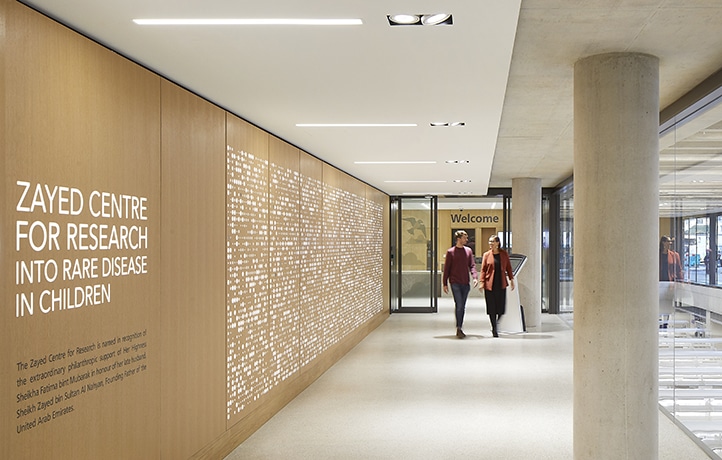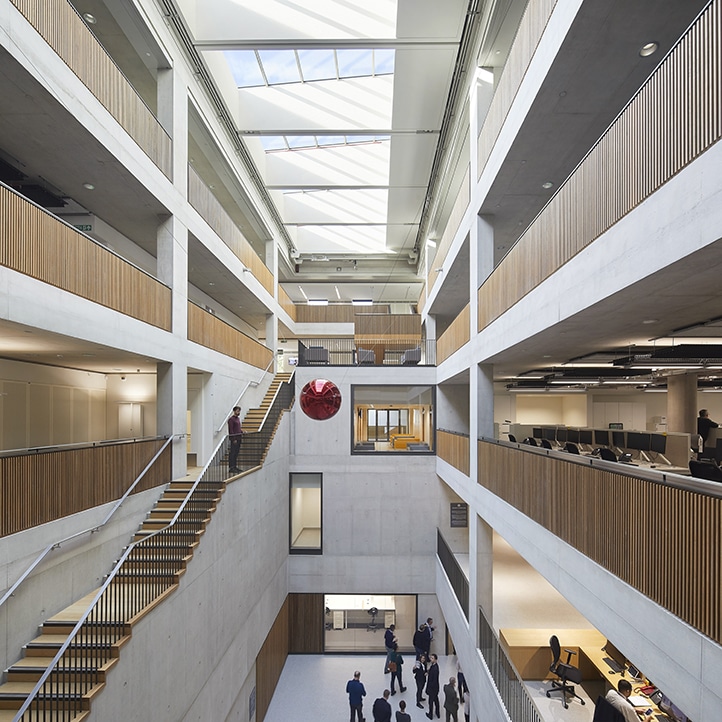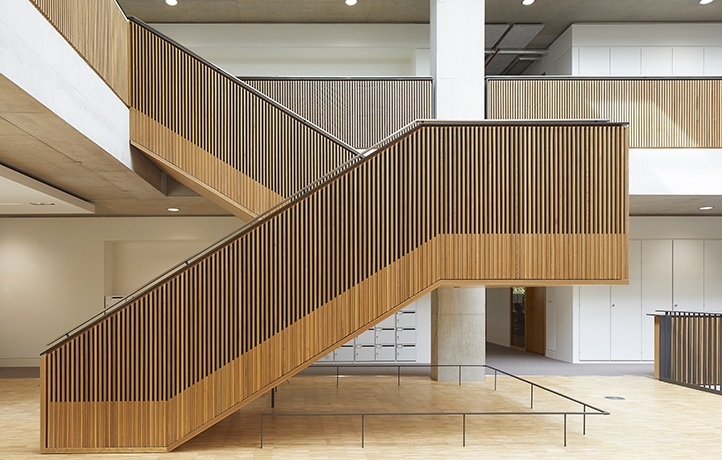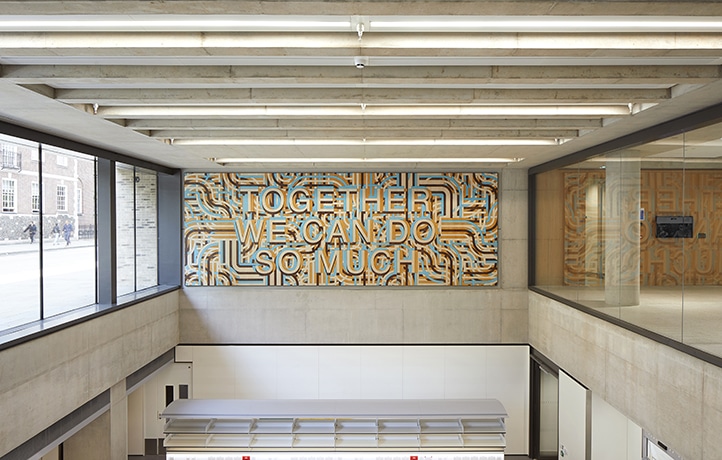Zayed Centre for Research in London by Stanton Williams is a new urban beacon of science and design
 Dedicated to delivering world class research together with new treatments and therapies, the Zayed Centre for Research by award-winning architectural practice Stanton Williams into Rare Disease in Children for Great Ormond Street Hospital Foundation Trust, University College London and Great Ormond Street Hospital Children’s Charity is the world’s first purpose-built centre dedicated to paediatric research into rare diseases.
Dedicated to delivering world class research together with new treatments and therapies, the Zayed Centre for Research by award-winning architectural practice Stanton Williams into Rare Disease in Children for Great Ormond Street Hospital Foundation Trust, University College London and Great Ormond Street Hospital Children’s Charity is the world’s first purpose-built centre dedicated to paediatric research into rare diseases.
The public-facing research facility in the heart of London’s Knowledge Quarter is conceived as a holistic space where science, city and human lives come together. Inside, the Zayed Centre for Research is organised around two connected ‘hearts’, an outpatient zone and a research zone, each planned as layered volumes around a daylit atrium. Across eight storeys the building provides academic research workspace, seminar and meeting spaces, specialist laboratories, and outpatient clinics for children and young people.
 With its prominent presence next to Coram’s Fields – the former site of the Foundling Hospital and a living symbol of children’s welfare for over 250 years – the Zayed Centre for Research is a new urban beacon of science and healthcare.
With its prominent presence next to Coram’s Fields – the former site of the Foundling Hospital and a living symbol of children’s welfare for over 250 years – the Zayed Centre for Research is a new urban beacon of science and healthcare.
Gavin Henderson, principal director at Stanton Williams, said: “The opportunity to work with Great Ormond Street Hospital, UCL and GOSH Charity to make a building that was about science and medical care in the heart of the city on such a public and symbolic site opposite Coram’s Fields seemed very powerful. We felt very strongly that we wanted to give public visibility to science and allow people in the public realm to understand what the building was about and give a sense of the life-changing activities taking place inside.”
 At the base of the building is a 600sqm double-height principal laboratory, visible from all sides within the Zayed Centre for Research as well as from the street outside. A shared single entrance bridge, which passes above these laboratories, welcomes both research staff and patients, drawing them into a central atrium, flooded with light. A transparent ground floor gives visibility and prominence to the activities inside the laboratories, while carefully articulated terracotta fins and glazing address Coram’s Fields and reflect the changing sky – expressing the civic significance of this ground-breaking institution.
At the base of the building is a 600sqm double-height principal laboratory, visible from all sides within the Zayed Centre for Research as well as from the street outside. A shared single entrance bridge, which passes above these laboratories, welcomes both research staff and patients, drawing them into a central atrium, flooded with light. A transparent ground floor gives visibility and prominence to the activities inside the laboratories, while carefully articulated terracotta fins and glazing address Coram’s Fields and reflect the changing sky – expressing the civic significance of this ground-breaking institution.
 A sense of openness and generosity dissolves the ‘clinical experience’ within. Encounters with ‘non-clinical’ surfaces, such as exposed concrete and European oak, create a calm and dignified environment for young patients and their families as they address their health issues: an environment shared with clinicians and researchers in the endeavour to understand and overcome the impact of life-changing diseases.
A sense of openness and generosity dissolves the ‘clinical experience’ within. Encounters with ‘non-clinical’ surfaces, such as exposed concrete and European oak, create a calm and dignified environment for young patients and their families as they address their health issues: an environment shared with clinicians and researchers in the endeavour to understand and overcome the impact of life-changing diseases.
Designed to high energy efficiency standards, the Zayed Centre for Research has achieved BREEAM Excellent certification and is intended to produce 35% less carbon emissions than required under the Building Regulations.
Images: Stanton Williams








